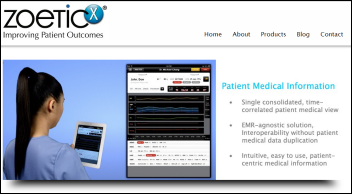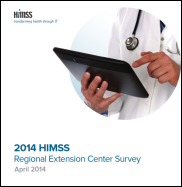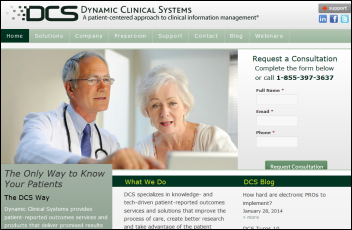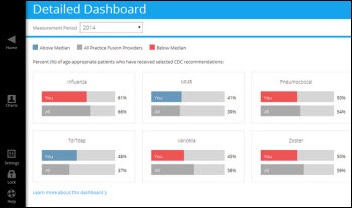HIStalk Interviews Lindy Benton, CEO, MEA/NEA
Melinda “Lindy” Benton is president and CEO of MEA/NEA of Norcross, GA.

Tell me about yourself and the company.
I started my career in district programs serving multi-challenged preschoolers. Through that experience, I began to develop interest in technologies that could help those kids. But with that in mind, I’ve done healthcare technology software and service companies. They’re all dedicated to driving innovative technologies in healthcare. The decision I made to come to MEA was exactly for that reason.
We are a critical link between payers and providers, which is a highly underserved market in our industry. We provide secure, compliant exchange of information. We have developed proprietary technology. We support bidirectional communication of requests, responses to those requests, and real-time access to documents by any authorized parties. They all have distinct relationships to the initial document that was requested.
We are the leading electronic provider. We have about 100,000 providers and 550 health plans. Our largest competitor is the US Mail and second to that would be a Fedex or UPS type sender.
We have been innovating around a secure exchange of the medical transaction for 20 years. We are unique in the industry in the way that we capture and get rid of paper and conversations between the payer and the provider and the provider back to the payer.
How big is the company?
We have 75 people that spend every day working on this very niche-y transaction.
It’s an unusual company name. Is that because you operate two kinds of businesses?
They are two distinct businesses. The NEA side manages the conversations between dentists and their payers. The medical side is the providers, so that’s really more hospitals, doctors’ offices, and the payers. There are two companies.
The MEA/NEA brand is 20 years old. It has migrated over the years, becoming the exchange of attachments. We do not do claims — we have partners that do claims – but other than attachments, it was the only conversation that happened between a payer and provider other than the claim — the denial, whatever.
It started there. But today, there are so many other paper conversations that happen in that world. Those are the conversations we address.
Most people would be surprised that submission of electronic attachments to support claims is such a big deal since it sounds as easy as an email attachment. Describe how that process works and why it’s so important.
Our technology enables the healthcare industry to reduce or eliminate the amount of paper. In 2012, we looked and there’s an estimated 0.9 billion to over 1.9 billion referrals or prior authorizations that were made across the healthcare system. That’s just in the revenue cycle.
There’s 8 billion pages of paper that are provider-to-payer messaging. I don’t think a lot of the offices that we serve today realize how much paper they have moving back and forth and the ultimate cost of that paper. People think of the cost being a stamp or a Fedex.
We did a study at a small community hospital. We have since spent about a year, probably a year and a half on that. About 40 percent of their claims were getting denied as a result of attachments only. It’s one little piece of the paper. This year, they have saved close to $500,000 just on getting zero denials. They went from getting denials because it was done by paper — it was too late, it came back, and all that stuff that happens that gets missed in the middle.
By automating just that one little piece, they save $500,000. This is a 400-bed hospital. Multiply that times all the hospitals. It’s a huge problem that a lot of people don’t think of it as a priority, but you can save some real money.
We support scan and fax, but the ultimate goal is preventing the creation of paper in the first place. We’re addressing that, too.
Even though claims are electronic, there’s still a paper component in some significant percentage of them?
Correct. Call it anywhere between 13 and 15 percent of the claims — it just depends on which specialty — drops to paper. When there’s an attachment requested, the claim will drop to paper also, because they want it all to be together. Don’t blame them, right? You want the all documentation for that claim to support it.
They drop the claim to paper, so it does not go electronically. Which leaves a lot of room for not understanding the handwriting, misinterpreting, not getting it. It goes to a mail room. Payers are spending billions of dollars on mail room technologies.
If you and I had to communicate about a date on our calendars and we had to write each other letters and wait for responses and then the date’s wrong when you send it back — that is what’s happening today in the conversation between payers and providers. That’s what we solve. It’s a big problem.
It sounds as though both ends of the conversation receive benefit. Who pays for your service?
Both ends. The provider generally pays a flat fee. The payer pays per page.
Let’s say CMS is auditing a provider. How would it work with and without your system?
One of the four certified auditors will send a paper request to a health system or a physician asking for which charts they want to audit. If they did not use the gateway, they would take the paper and mail that chart and mail all the supporting documentation back to the auditor. That’s a paper transaction.
About a year and a half ago, Medicare, the CMS office, built this gateway. You had to get certified. A lot of people have come in and out of that certification because it’s not as easy to maintain as some think. There’s different changes in the regulations. We’re one of the top senders, if not the top, of the 18 or 20 of them.
When you put it in the mail, there’s a lot of the “I didn’t get it” on the other end, whether it’s the payer, auditor, or requester. We allow for an audited, verified transaction. We send receipts back and say it got picked up. We know when it got picked up and we know when it got read. It’s almost like a read receipt that you get on your email. That doesn’t exist in paper.
You are the only company that does this?
There are other portals that payers have where they will ask for attachment through their portal. The problem with that portal is it is payer specific. I guess you could call that a competitor when you’re in an area where a provider is only using that single payer. We have not found one of those yet.
When you have a hospital that has multiple payers, we allow them to have the same work flow. We are part of their work flow. We will take care of sending it to the payers where it needs to go. It is not the onus of the hospital to go figure out which portal they need to use to go with which payers. You can imagine their desktop would have 50 icons on it where’d they have to go figure out the workflow for each. That’s what we prevent.
Accel-KKR took majority position in the company in September. What’s been the impact of that investment?
AKKR is a larger network of companies that we can partner with. KKR is the holding company, for lack of a better word, for Accel. They own very large companies like Mitchell, who do a lot of transactions in property casualty and worker’s comp. It allows for us to even add more services to our portfolio.
It’s one-stop shopping. Rather than just the medical claims attachments that go between payer and provider, we can now add services for some of the other partners that they have in their portfolio. That’s been a big change.
The other is the broad thinking that Accel has around some of their portfolio companies and the industry. They have a lot of knowledge across a broader range of services that allows us to utilize those in our network.
Where do you see the company going over the next few years?
We see ourselves leading the charge. We like to say that we are innovating the front of the curve. The curve is obviously the EDI 275 patient information transaction and getting that mandated and getting it out. That’s not there yet, but they are moving toward that.
We see ourselves evolving into full-service revenue enhancement company. We want to get rid of all the paper that exists in the industry today, and that means a manual exchange of faxes and scanning and what they do today to get it to us. In order to get us a piece of paper today, somebody at the other end has to have some method of getting it in electronically.
We are working on the enhancement of our product. With our partnerships with the claims clearinghouses, the EHRs, and the practice management systems, that transaction by the end of next year will be digital for those who are adopting it … where the payer is going to request some additional documentation.
It will go back through the claims clearinghouse. We will take that transaction and go into the electronic health record or the practice management system. We will grab the document that’s requested and bring it in. What we need and what we’re developing through partnerships and internal development is there’s got to be some intelligence around the piece of paper. When they ask for the lab results for X, I have to be able to go read that. That’s the intelligence we’re developing.
Then we will try to get those health organizations and physicians to stop producing paper. That’s the industry trend — no more paper. When that happens, I don’t want them printing a piece of paper in order to give to the payer as supporting documentation. We are moving along that ride with the rest of the healthcare organization to produce that digital transaction.
Do you have any final thoughts?
The demands of the healthcare environment have never been more challenging. With emerging care and payment models, the collaboration between payers and the providers and that process that exists today, the exchange of HIPAA-secure documentation that’s paper-based and goes in fax and mail — that’s not efficient. That’s not HIPAA secure. That has to be eliminated. There’s tremendous cost and lawsuits and all the other things that are happening around that industry when it stays on paper.
The drug industry now drives patients to request a specific drug from their providers. We walk in and tell them what antibiotic we want. Providers need to demand from their payers the ability to communicate electronically so they have an audit trail, so they can track it, so it’s secure. That demand is not just a cost of doing it. I demand that you allow me to be secure in my transaction and not have a piece of paper that I’m faxing or Fedexing that’s going to sit on your doorstep.
I think we can change this a lot quicker than it’s changing. Payers have a lot on their plate. It’s not that they’re not talking about this, but to change the importance, providers need to start driving that contractually when they sign up with their payers — that they want that exchange to be electronic. They can help drive the industry.

















































































































I hear you, and I agree—HIMSS is definitely facing some big challenges right now. The leadership and governance issues you…